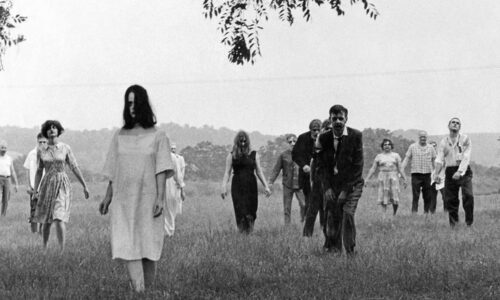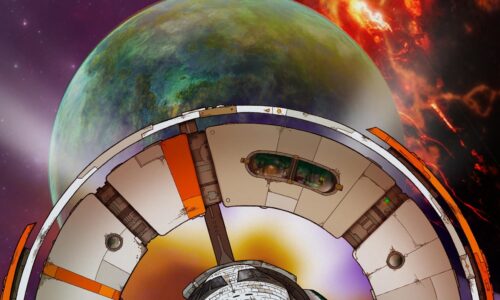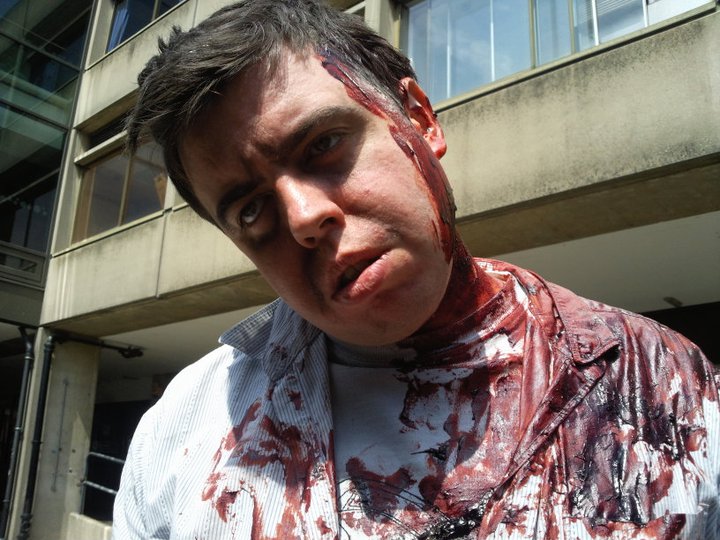
My Life with the Living Dead
- Uncategorized
- April 14, 2021
So today marks the launch of the second instalment of Fermi’s Progress: Descartesmageddon. I’m going to be talking a bit more about the ideas and inspirations behind this story over the coming weeks, but from the outset the main thing you need to know is- it’s a zombie apocalypse story.
And that makes this very special to me, because in a lot of ways this is a story I’ve been trying to tell for 21 years. Having stopped to put my head between my knees and take some deep breaths to recover from the temporal vertigo of typing that, I’m going to be quite indulgent and take you on a tour of my history with the genre.
I started writing this wanting to do a quick tour of the works that introduced me to the genre, and ended up realising that it’s literally shaped my entire life.
Discovering the Living Dead
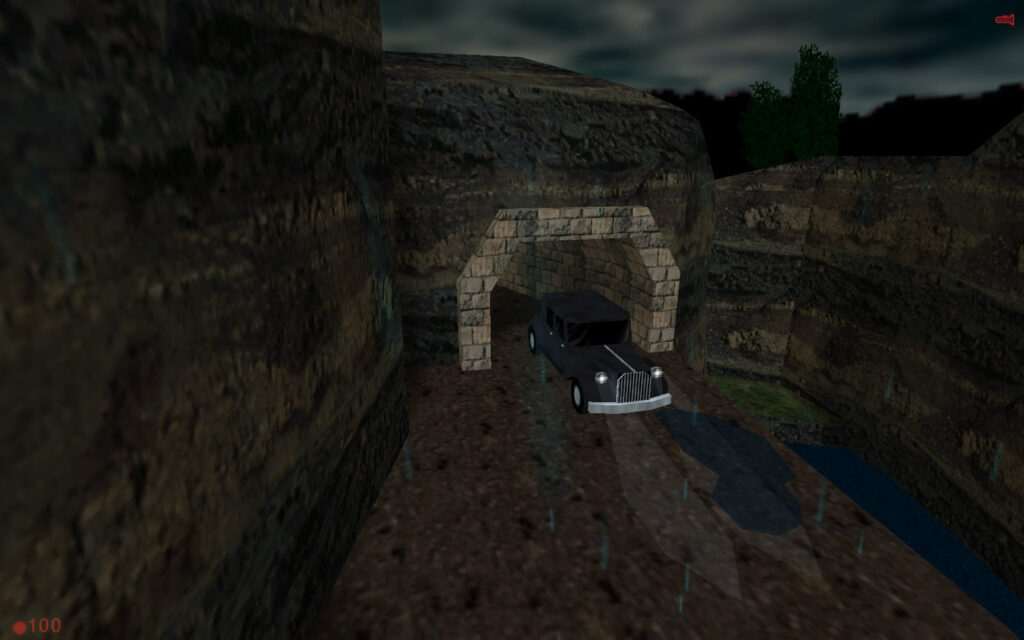
As a kid, I didn’t have many videogames. That’s not to say that I didn’t play videogames much, but the Explicitly For Schoolwork PC my dad had pinched from his school was not friendly to the videogame specs of the time, and the price of most games of was prohibitive.
But one game my computer could play was the first Quake game, which, handily, meant it could also just about run Half-Life, which was built on the same engine.
I played Half-Life to death. I played through the campaign more times than I can count. Then I played through it used cheats like /noclip to go off-piste and explore and explore the tucked away backdrops of the opening train ride and get to those locked away rooms where the G-Man was constantly straightening his tie. I loved the plot and the setting and the way the story was told, but soon even I had done everything I could with that game.
Fortunately, Half-Life also had one of the most vibrant and active modding communities out there. Most of them were multiplayer mods, which did nothing for me as my clunky computer and our house’s feeble dial-up connection were solid obstacles in the way of me ever successfully joining a game.

But the single-player mods, that was the good stuff. Hours of entertainment, a lot of it up to a professional level, completely free. This made up the bulk of my teenage gaming.
But the mod that really changed everything came on the CD on the front of an issue of PC Gamer magazine- They Hunger.
Half-Life had broken so many of the rules set by FPS (“Quake Clones” as they were known then). Instead of fortresses and futuristic military bases, you were fighting your way through offices and break rooms. Instead of playing a super-soldier or space marine, you played the skinny, speccy, ginger mute, Gordon Freeman, whose only advantages over the dozens of short-lived scientists in the game was his bright orange “hazard suit” and a knack with a crowbar.
But They Hunger took it further. Instead of being a scientist at a secret government research installation, you were a writer retreating to a small town. Instead of an crowbar, you were swinging an umbrella.
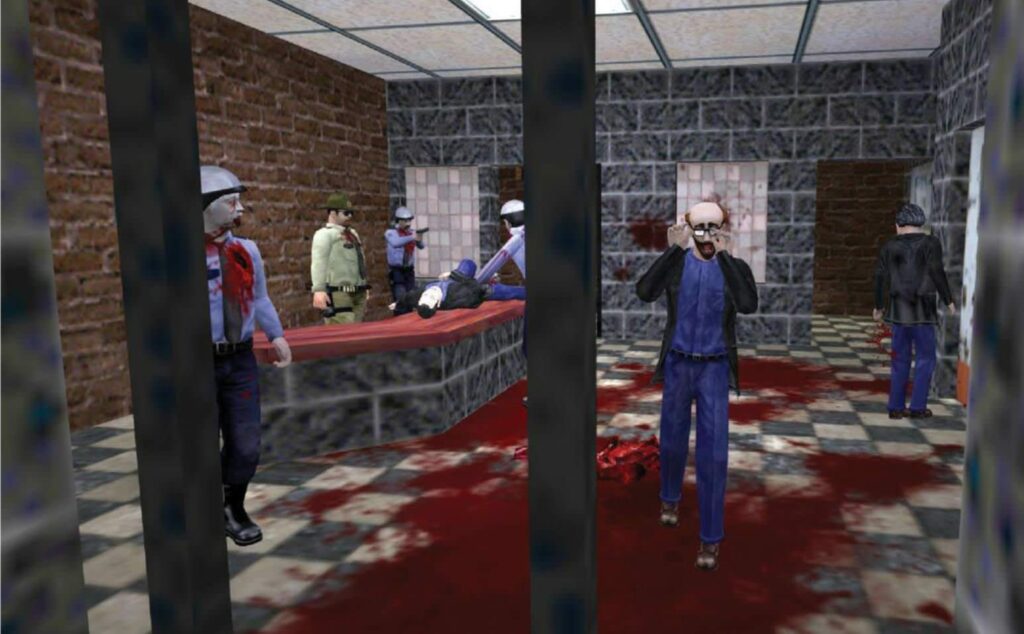
To kid in a shit-end-of-nowhere village in the Midlands, notable only for being the home to a dead-almost-Queen, the mythical King Ludd, and a disturbing prevalence of anti-Traveller racism, this game felt like representation.
The settings were all places you might walk past on the way to school. The monsters were just the people around you, changed only slightly. I hadn’t yet discovered folk horror, and so this game was the first time I saw a story tell me what I already knew- that the village your school and local newspaper told you was an idyllic rural haven, was actually a kind of hell.
Writing the Living Dead
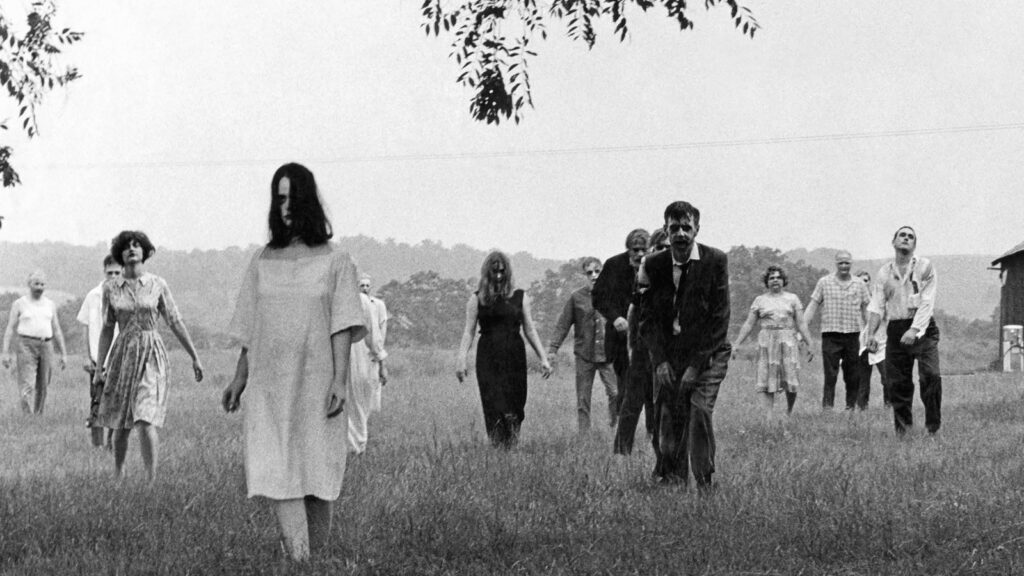
I wanted more.
Soon, Night of the Living Dead became the first movie I ever streamed, with my nose right up to the monitor as I watched the heavily pixelated, four-by-four inch window in my room with the lights off.
Dawn of the Dead was harder to acquire, and I was frankly too much of a wuss to try and get it from the video rental place while underage. So instead I downloaded George A. Romero’s script and read it beginning to end.
When, as a student at university, I finally laid hands on a DVD copy of the film, I was part relieved, part disappointed when Francine escaped the mall in a helicopter, rather than ending the film by ramming her head into its spinning blades.
But it was long before then I wrote my first zombie story, Night of the Living Impaired. Like any young, queer writer, of course I had to write my coming-of-age coming-out novel, it’s just mine was about a zombie apocalypse.
The satire is- not subtle. The zombies aren’t monsters, they’re just people, coming out of the coffin rather than out of the closet (yes, 16-year-old me probably thought that was clever). It’s a book that, frankly, is obviously written by a 16-year-old with all the problems books written by 16-year-olds have. But what surprised me when I opened the word document for the first time in a couple of decades was the very real anger behind it. The biggest threat to the zombies-who-are-metaphors-for-queers in that book aren’t the open bigots, the people who will hurl abuse at you and threaten you with violence. It’s the people who claim to want to help you. The people with “legitimate concerns”. The people who are “Just asking questions”. For something written at the height of the Section 28 era, when the newspapers were openly handwringing about the “Gay Mafia”, it was frankly disturbing reading it today and seeing just how easily the current trans discourse slots into the metaphor.
The other thing that shocked me was that the zombies are gross. As one (zombie) character points out to another, every zombie in the book starts off as a human. However much they fight it, they all hold that same revulsion for themselves that the living hold for them. It’s not a metaphor I would use now, but holy shit did it make me want to reach through the page and give baby-Queer Chris a hug.
At the time I was still not as knowledgeable as I thought about the genre. It would be a little while before I realised that my “subversion” of the zombie story was baked in from the start- it’s there in every Romero film, drawn from the novel I Am Legend that is the granddaddy of all zombie stories. The zombies were always the sympathetic party.
Life of the Living Dead
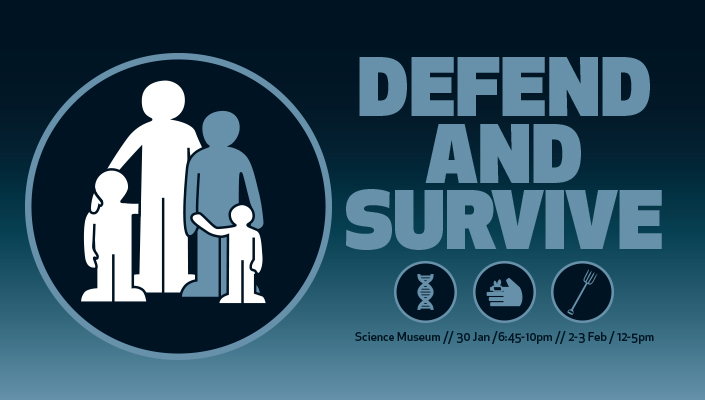
That novel would get drafted and submitted and rejected by countless places, until it was overtaken in my efforts by a story about a kid whose best friend died and was brought back by cloning- a low-fi aesthetic that still has the DNA of those first zombie stories in it. It became my first published novel, Mark II.
But before Night of the Living Impaired was put back in the desk drawer, never to be taken out again, it was used as part of my application for the University of East Anglia’s creative writing course.
On the strength of that writing sample, I got a place. Through that course I met Mary Hamilton and Grant Howitt, who later hired me to write material for the Zombie Trial live event at the British Science Museum, which in turn later led to me writing a scenario for the upcoming SIN sourcebook for the Spire: The City Must Fall RPG.
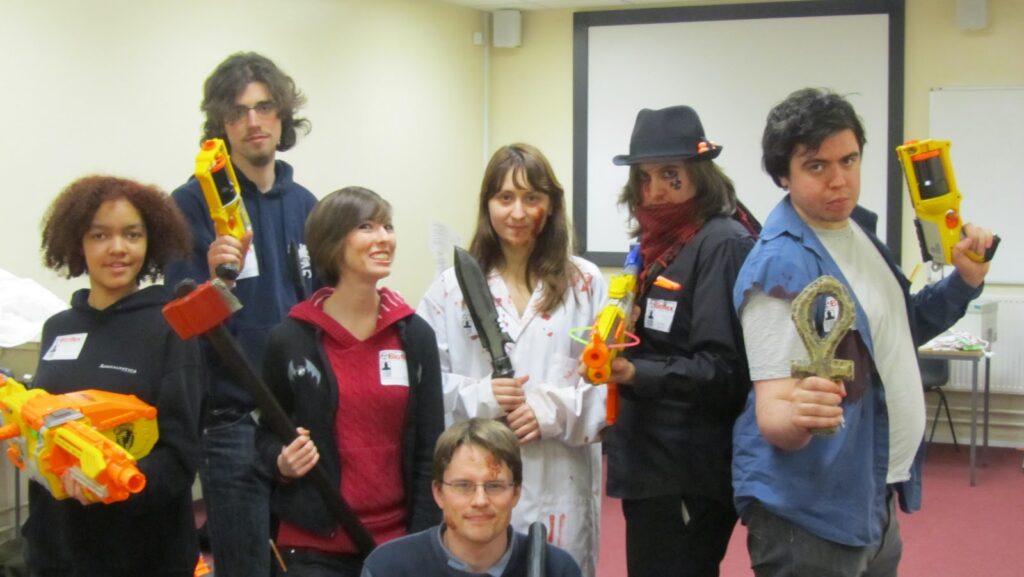
Grant and Mary also introduced me to Zombie LARP, where I met Alina Sandu who designed this very website, and did the layout for the Fermi’s Progress books.
When, a decade ago, I found myself suddenly unemployed, with scrabbling together a freelancing career my best hope at paying the rent, I filled the time between those first scarce jobs writing a blog about zombie movies.
Through that blog I got my friend Hannah Eiseman-Renyard arrested when I asked her to go take some snaps and interviews of a zombie flash mob at the Royal Wedding (and holy shit I’ve just discovered that whole incident now has a Wikipedia page!) Friendships made through that led to me running the “Apocalypse” track at the Nine Worlds Geekfest 2015.
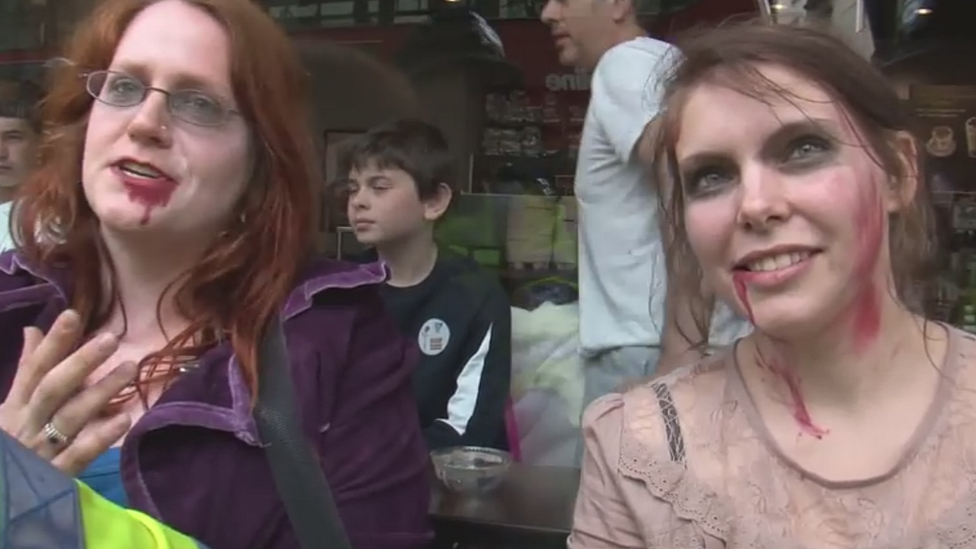
But most significantly, playing that videogame that led to me writing that story that caused me to get accepted to UEA, led to me moving to and living half of my life in Norwich, which in turn led to me meeting my partner, my son, and to the birth of my daughter.
In a very real and quite terrifying sense, I owe my life to zombies.
And now, I’ve written another zombie story. It’s different. For a start, it’s set on an alien planet peopled by blind, sentient fungus. But it’s also set in a small town not a million miles from the shitty village where I grew up (I mean, literally it is, but you get my meaning). It is also a story about our ability to other, to monsterise, about which people we will allow to be called people. And to my own surprise, there is one pivotal scene that is almost an exact replay of a scene in Night of the Living Impaired.
People make fun of the phrase “This lives in my head rent-free”, but it’s a shock when you stumble into one of your brain’s long-term tenants.
Of course, ideally, you want them to pay rent. So you can work this one by buying Descartesmageddon at Amazon or Scarlet Ferret now.

